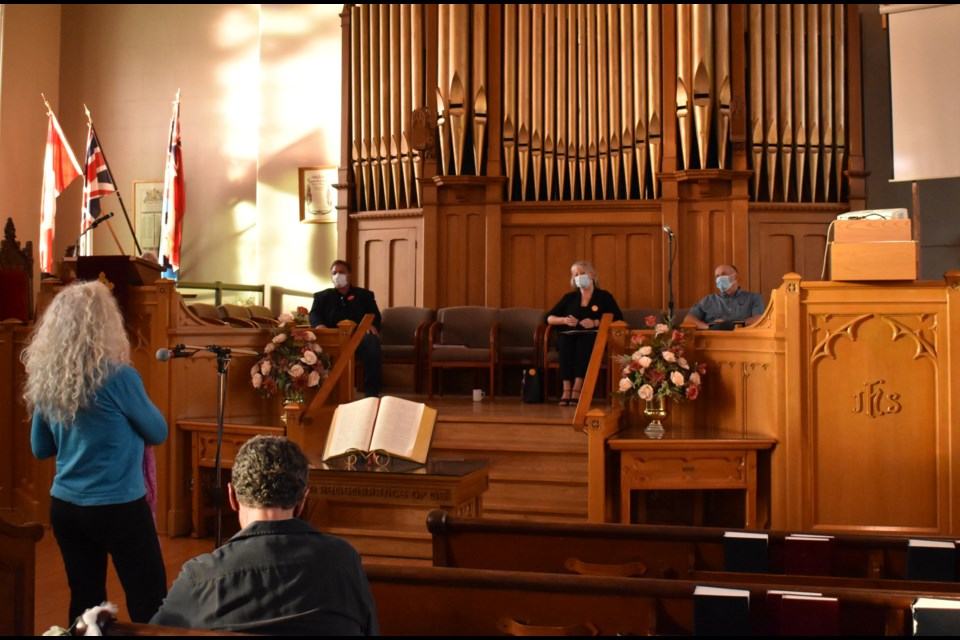ELORA – Wellington-Halton Hills candidates stressed in at a debate they represented the party that can fix the housing crisis without impacting heritage.
On Thursday evening, Architectural Conservancy Ontario Wellington branch hosted an open mic event with local provincial candidates on balancing the need for more housing with heritage at Elora’s Knox Presbyterian Church.
Although it wasn’t called a debate, the public forum more or less acted as one for candidates in Wellington-Halton Hills with NDP Diane Ballantyne, New Blue Stephen Kitras and Liberal Tom Takacs taking turns giving statements and responding to attendees.
Progressive-Conservative Ted Arnott and Green Party’s Ryan Kahro were not present.
During opening statements, Ballantyne attacked the Ford government who she said is using rapidly escalating housing prices as a rationale for a “highway driven agenda of urban sprawl, enacting the most regressive land use and environmental planning agenda in Ontario’s history.”
She said the NDP are committing to building 1.5 million new homes over the next decade and the creation of a new public housing agency to build 250,000 new non-market rent homes over 10 years.
“The NDP values housing as a human right because everyone deserves a place to call home and we can do this, and will do this, without paving over farmland or destroying cultural and natural heritage," Ballantyne said.
Takacs called out the Ford government’s Bill 109 — More Homes For Everyone Act — for fast tracking housing through bypassing municipal and public consultation.
“Liberals think that these bills go too far and although we agree that more housing is needed, local impact, municipal authority and heritage preservation must be respected,” Takacs said.
Kitras also touched on keeping public and municipal engagement while building a new affordable housing supply.
“For the most advantageous and powerful stakeholders, ordinary Ontarians never seem to be part of the stakeholder class,” Kitras said. “It’s important for us to understand that anyone that calls you a NIMBY is a bully because they’re trying to dehumanize you and not allow your voice in the process and that’s not acceptable.”
Kitras said the New Blue party approved him to put a local issue on his platform, which promotes mixed housing in new developments with 30 per cent being attainable housing with a rent-to-own option.
Kathy Baranski, who said she’s been involved with the local heritage community for many years, asked where houses were going to be built if they weren’t going to be in heritage areas or greenfields.
Takacs said intensification should be focused on areas that are close to public transit, colleges and universities while places with less of these features should have more gentle densification.
Ballantyne noted the problem isn’t in heritage areas but in areas with exclusionary zoning that doesn’t allow for adaptive reuse such as converting homes into duplexes or triplexes. She noted a lot of this is done at the municipal level but provincially they can increase supply, change zoning rules and mandate affordable housing as part of new developments.
Kitras said he doesn’t want to import a “Toronto-focused strategy” for rural Ontario when it comes to housing which he said has been driving the recent Progressive-Conservative government and past Liberal ones. However, he said developers should be able to think more creatively and involve the community when it comes to building beyond single-family home developments.

.png;w=120;h=80;mode=crop)

